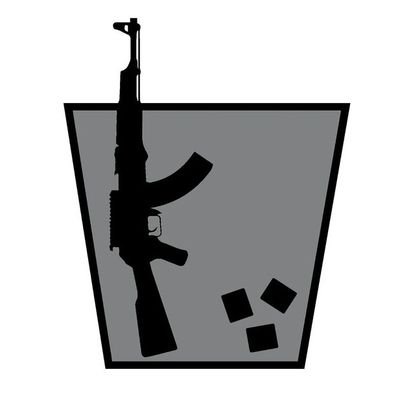
Lucas Hellemeier
@LHellemeier
Followers
436
Following
1K
Media
18
Statuses
398
Pol Econ of Defense, PhD Student @jfkinstitutefub; Visiting Scholar @BUPardeeSchool; Morgenthau Fellow 2022-23 @ND_ISC; Research Fellow 2023-24 @Hertie_Security
Berlin, Germany
Joined October 2018
What are the implications of Russia's war in 🇺🇦 for the 🇪🇺 defense industry? How does this peculiar industry work in general? I address these questions in a cluster for the open science platform @tema_think. The special input https://t.co/YaSgHWbCSa synthesizes /1
te.ma
Lucas Hellemeier beleuchtet die europäische Rüstungsindustrie vor dem Hintergrund des russischen Angriffskrieges.
1
3
7
Great piece by @hoshigi_nam and @W_Alex_Sanchez on how vital exports are for second-tier arms producers to sustain production! It begs the question: To what extent do the expectations of those exports drive production decisions?
In their new article, Hoshik Nam (@hoshigi_nam) and Wilder Alejandro Sánchez (@W_Alex_Sanchez) discuss the growth of the South Korean defense industry and how expanding into the Latin American market offers an opportunity for diversification.
0
0
2
I’m excited to share my first article on @WarOnTheRocks with @W_Alex_Sanchez! If you want to learn more about the current issues and future prospects of the South Korean defense industry and its potential impact in Latin America, check out the article!
In their new article, Hoshik Nam (@hoshigi_nam) and Wilder Alejandro Sánchez (@W_Alex_Sanchez) discuss the growth of the South Korean defense industry and how expanding into the Latin American market offers an opportunity for diversification.
5
6
29
beneficial but essential. In short, regulating for defense today ensures Europe's security tomorrow. /end
0
0
0
fiscally sustaining demand. Or, as we argue, defense inflation will return with a vengeance, posing an obstacle to the sustainable provision of defense as a public good at the national level. A better functioning European defense market through EU regulation is not just /5
1
0
0
thereby incentivizing R&D spending and ensuring long-term competitiveness. Since February 2022, defense procurement by EU member states risks exacerbating pre-2022 inefficiencies. The current challenge of increasing production may turn into the well-known challenge of /4
1
0
0
remain the main providers and buyers of defense as a public good, the EU has a comparative advantage in providing its member states with a common market. Most importantly, EU regulation can reduce defense market uncertainty, a key feature of defense market interactions, /3
1
0
0
market, thereby contributing to Europe's defense in these troubling times. In our contribution for @CESifoNetwork 's EconPol Forum (@ifo_Institut), we argue that conceptualizing defense as a public good includes providing a market for defense material. While EU member states /2
1
0
0
https://t.co/sY6xdvDCgk "Markets in Defense of Europe" is most likely going to be my favorite article title. Together with @kaijaschilde, I had the opportunity to advance our argument on how the European Union can leverage its regulatory authority to shape the European defense/1
1
0
1
respective suppliers and recipients. Link to the article (in German):
esut.de
Die SIPRI-Daten zu internationalen Rüstungstransfers sind für Politik, Zivilgesellschaft und Wissenschaft ein unschätzbar wichtiger Kennwert und bekommen zurecht weltweite Aufmerksamkeit.
0
0
0
It is important to note that @SIPRI data captures only international armament dynamics and does not account for domestic or cooperative arms procurement. I conclude by highlighting a few trends relevant to Europe, focusing on the largest importers and exporters and their /5
1
0
0
of knowledge about @SIPRIorg's unique measurement, the 'Trend-Indicator-Value' (TIV). To illustrate the measurement's implications, I compare the volume of 100 US-made Javelins against one F-35 fighter aircraft. Measured in SIPRI's TIV, the latter transfer has a greater volume./4
1
0
0
For instance, most types of artillery shells, except for guided shells, are not included. Likewise, unguided anti-tank weapons like the 🇩🇪 Panzerfaust or the 🇸🇪 Carl Gustav are excluded. Second, @SIPRIorg's measurement of transfer volumes is often misunderstood due to a lack /3
1
0
0
attract public attention. However, commentators often misunderstand the underlying methodology. Thus, the first part of the article clarifies what kinds of arms transfers @SIPRIorg measures and how it measures those arms transfers, or rather major conventional weapons. /2
1
0
0
Could not be more excited to be included in the latest @SurvivalEditors issue with my article 'Forever Bound? Japan’s Road to Self-defence and the US Alliance' exploring the promises of Tokyo's defence reform: ➡️ https://t.co/jfR7LaErWw
4
13
60
some form of military Keynesianism is as straightforward as this post suggests. 2/2
0
0
0
Not that I'm opposed to ramping up production, but reducing this to a matter of 'will' and/or 'pressure' ignores decades of defense economics research. Neither the transformation of civilian industrial capacity into defense industrial capacity nor the application of 1/2
This is unfortunately quite accurate. Diehl and Hensoldt are already among the few German arms manufacturers that have established an automated product line for IRIS-T SLM, but it's far from enough. Germany remains an industrial powerhouse capable of converting its civilian
1
0
1
Last week, NDISC held a reception for our first four cohorts of the Hans J. Morgenthau Fellowship at the International Studies Association Conference in San Francisco. It was great to see everyone there, and to connect young scholars working on grand strategy.
1
2
16
defence € more efficiently. Despite European defence expenditures reaching Cold War levels, financial resources remain constrained. The enduring challenge of defence inflation for high-end tournament goods persists (see @Justin_Br0nk's https://t.co/WKk6rFLc4O) /end
rusi.org
The development of a next-generation fighter as part of the Global Combat Air Programme risks being held back by unrealistic cost and investment estimates. Either it must be funded properly, radica...
0
0
0






